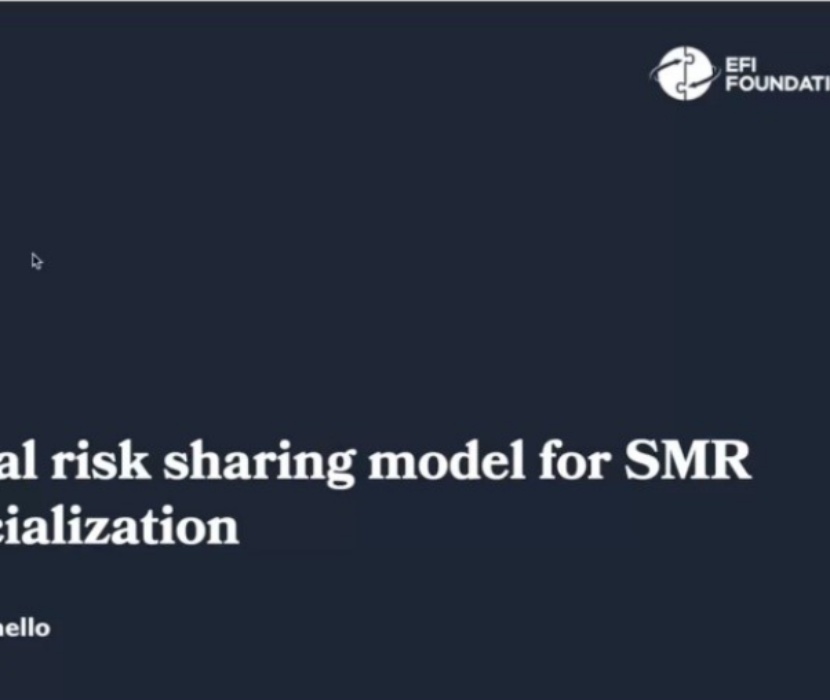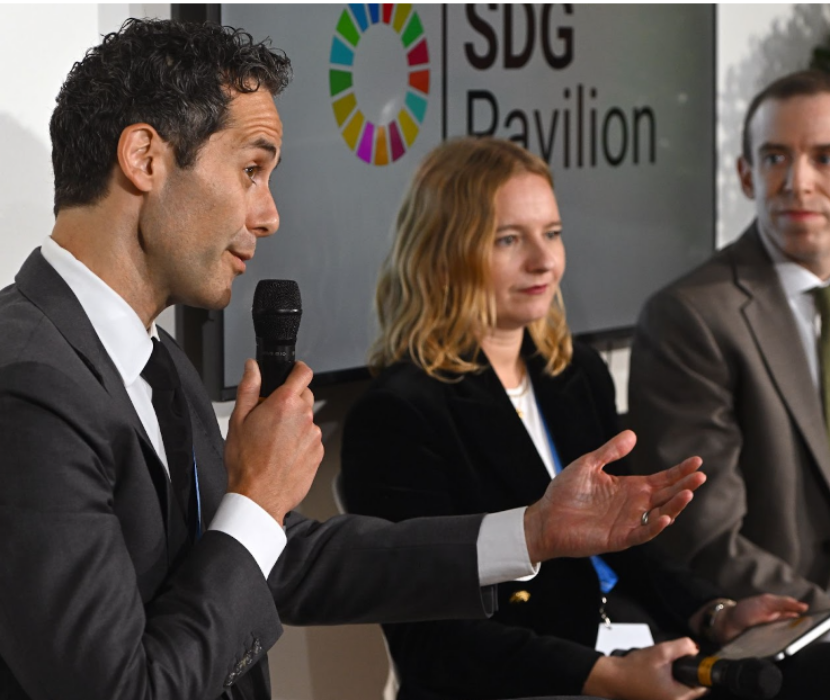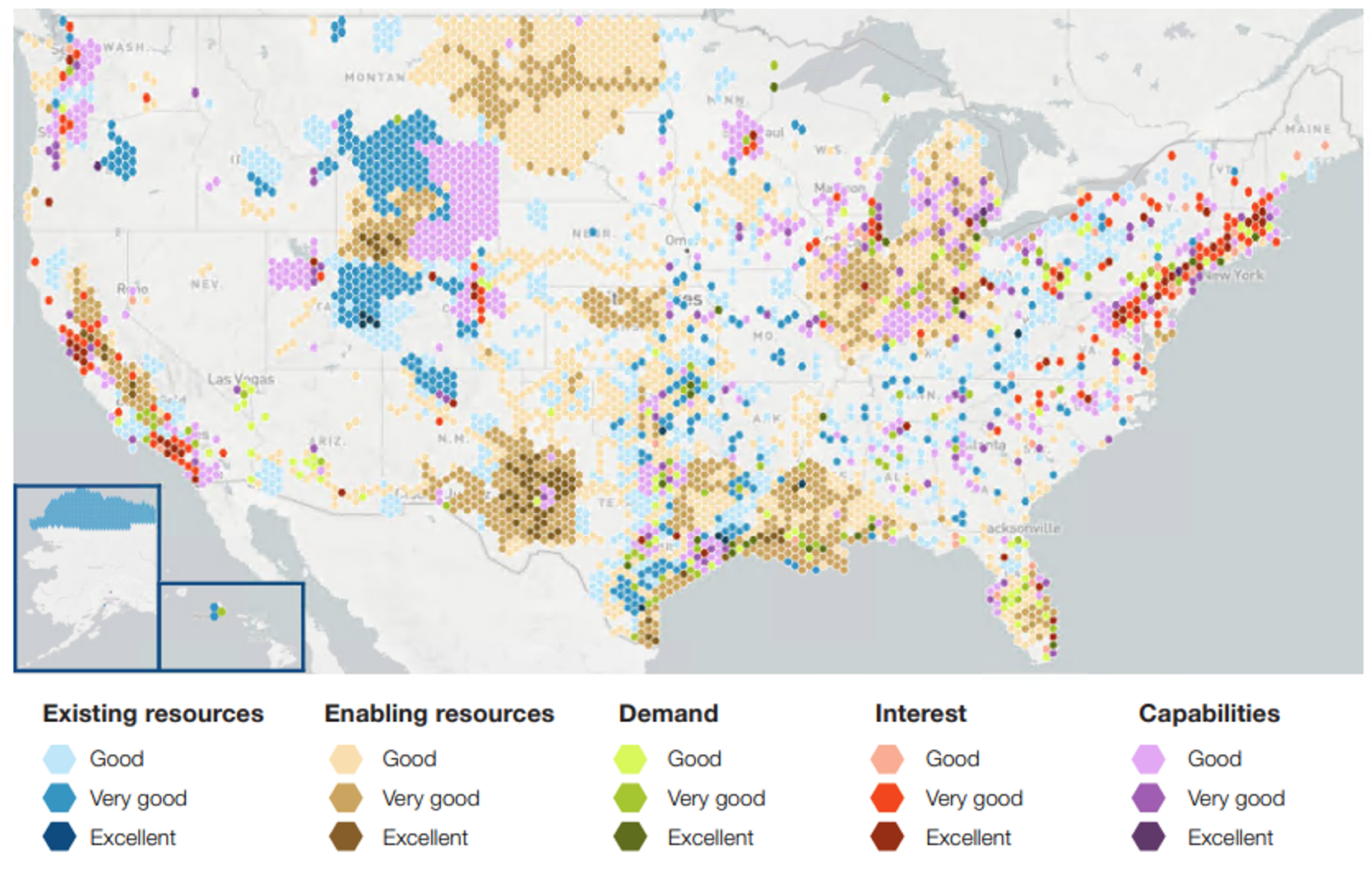
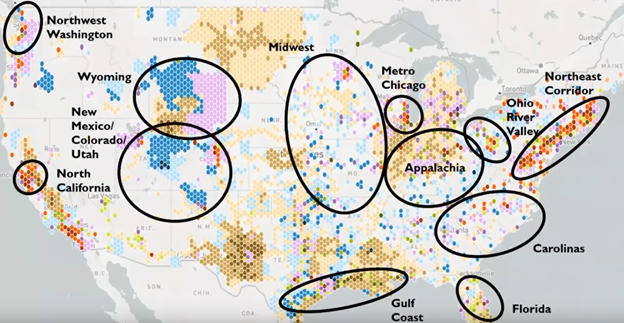
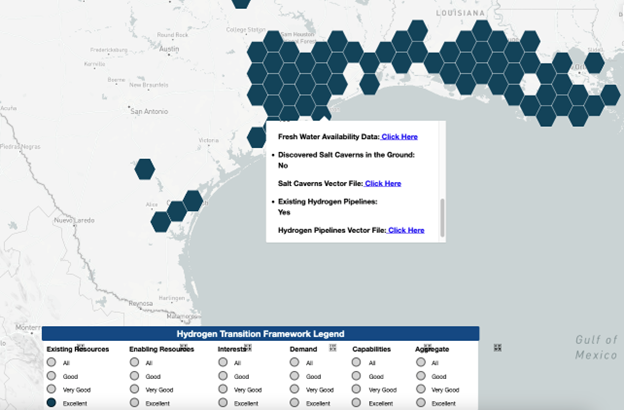
The Bipartisan Infrastructure Law’s $7 billion to establish regional clean hydrogen hubs is driving more businesses to consider how to get into this game-changing space. Companies already produce hydrogen in the United States as part of methanol and ammonia production and oil refining, but clean hydrogen for electricity is a new industry altogether. Not only that, but clean hydrogen could also be used in the industrial sector and for heavy-duty transportation. How do we get started?
Start with the help of the Hydrogen Transition Framework (HyTF, “high-tiff” for short)—an interactive online tool developed by the EFI Foundation this year especially for energy companies, investors, and policymakers. The tool maps the existing and enabling resources, demand, interest, and other capabilities necessary for a clean hydrogen hub to develop in regions across the country.
For example, if you are a project developer looking for opportunities to site a clean hydrogen production facility on the Gulf Coast, you could zoom in on that region in HyTF to see what resources are available, like existing pipelines capable of transporting hydrogen or salt domes for storing the hydrogen. You could also look at potential sources of demand for hydrogen in the Gulf Coast region to determine if potential buyers are nearby.
Every region is different. In the Ohio River Valley region, a project developer can see the potential for clean hydrogen based on many factors. See these and other examples in the HyTF tutorial video in our U.S. Hydrogen Demand Action Plan event, held earlier this year.
“The data allows you to toggle between various types of local ingredients that go beyond just supply and demand that could help an investor or anyone curious about hydrogen think through the opportunity space,” said Alex Kizer, the lead on the EFI Foundation’s hydrogen work. “We think that it will help all of us learn and move up the [hydrogen] learning curve.”
HyTF displays more than 11,000 hexagons, each representing approximately a large U.S. metropolitan area, or 400 square miles. Within each hexagon, users can see different factors that could inform hydrogen infrastructure development. Examples include freshwater access, natural gas potential, hydrogen pipelines, salt dome formations for long-duration storage, and current hydrogen production.
“There are opportunities across all stakeholder categories to find something of interest,” Kizer said. “Getting these groups to interact by using a tool like this is also pretty exciting. [HyTF provides] the kind of creative thinking that could help sort through some of these early days challenges of hydrogen market formation.”
Developers can also use HyTF to identify potential negative impacts to hydrogen project development so that they can then address them. For example, for the Cleveland, Ohio, area, HyTF shows the presence of natural gas pipelines, rail hubs, and major shipping routes. These industrial facilities make the area a good candidate for a clean hydrogen hub. Still, they are also associated with higher pollution levels, poor air quality, and other environmental factors that affect the health of people living in that community. Developers use the data in HyTF to inform their work to address environmental justice concerns while building clean hydrogen projects. See details in our case study. The EFI Foundation is conducting further research on community impacts, which will eventually be incorporated into HyTF.
Go ahead and explore HyTF and get familiar with the potential for clean hydrogen hubs across the United States.
-Callyn Bloch, Communications Fellow; and Alicia Moulton, Deputy Director of Communications
(Share this post with others.)


